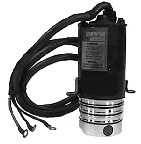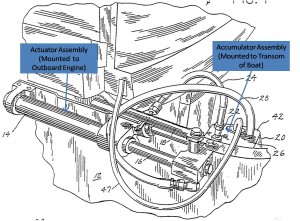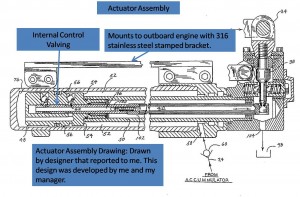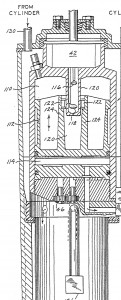Product Design, Development & Materials
Product Design
Mark has experience with all phases of the product design and development life cycle. He has worked on vehicle engineering projects with a long history and vast expertise in:
- Concept
- Prototyping
- Test
- Production
Whichever phase of the product design and development life cycle your technical engineering project is currently in, Mark can help you move your project forward in an efficient and cost effective manner.
Materials
Due to his vast experience with a variety of technical engineering projects for both vehicle and marine hydraulics, Mark has the ability to select the right materials for your product.
Experience and Achievements in Design & Development
Senior Design Release Engineer, General Motors (4/2017—Present)
Lead mechanical systems design, ADVP&R planning, and project management for pickup bed cover systems – a program with a high contribution margin. Accountable for all stages and aspects of the product development lifecycle – including conception, cost, aesthetics, design, timing, validation, tooling, full production, marketing, and continuous improvement. Team leader for cross-functional, matrixed teams. Manage design and tooling budget.
- Led the PPAP, release, and launch of three pickup bed cover systems.
- Conceptualized and developed an innovative cargo caddy system using a simplified design to minimize material costs (U.S. patent pending).
Senior Designer – GM Technical Center (2014—2017)
Led the mechanical product design of door sub-systems and components. Performed 3D modeling using NX-9 CAD.
- Innovated a Thatham cover that saved assembly time by an estimated 1,333 labor hours annually.
- Integrated lock, latch and release systems into the door for a new vehicle – enabling use of carryover cables and avoiding $50K in new tooling expense.
- Designed a latch actuation rod with fewer offsets, saving an estimated $8K annually.
Quality Engineer, Crossover Vehicle, General Motors Corporation (2006-2014)
- Provided Unigraphics design support for the GMT-561 as the only resident vehicle design resource. Total vehicle responsibility. Utilized UG NX3 daily for design studies and to create math models in support of many functional areas within Spring Hill Manufacturing. This includes quality engineering, manufacturing engineering, dimensional analysis and production operations.
Vehicle Project Engineer, Sedan, Coupe, SUV, Saturn Corporation, Spring Hill, Tennessee (1998-2006)
- Played key product engineering role across multiple architectures in over 10 major vehicle launches at 5 different GM manufacturing facilities. Issues were in several vehicle categories: sheet metal, mechanisms/hardware, interior trim, weather-strips and HVAC. Resolved complex issues in high pressure, critical situations. Led multidiscipline teams to resolve many of these launch issues.
- Made strong contributions as both a designer and project manager through all phases of vehicle development from concept (studio) to vehicle launch and ongoing production. Have a strong focus on vehicle level integration of systems and components.
- Door system High Risk Issue Champion (HRIC) for major vehicle program. Acted as a focal point for launch issues for door systems. Laid out detailed action plans to overcome “no build” launch issues, and determined appropriate facilitators for each action item. Reported progress to upper management daily/weekly. Formulated solutions to both technical and non-technical issues.
- Was appointed lead engineer for vehicle exterior systems work group. Work group consisted of two current vehicle engineers and one designer. The work group significantly reduced warranty, part cost, ergonomic issues, and improved plant throughput and JD Power scores through continuous design improvements.
- SMT co-captain for door systems during 3 vehicle launches.
- Lead engineer for transition from Saturn engineering systems to GM engineering systems. This included identification of personnel training needs, team structure and hardware/software needs.
Sr. Project Release Engineer, Body Closures/Spaceframe Saturn Corporation, Spring Hill, Tennessee (1994-1998)
- Released continuous design improvements to all components in door system for current vehicles. Included structure, hardware, mechanical systems, weather strips, glass and thermoplastic exterior panels.
- Managed changes that effected vehicle interfaces between door system and surrounding vehicle environment. Performed system evaluations, testing, and design studies of packaging environment to verify changes prior to implementation.
- Redesigned automatic transmission shifter mechanism to resolve issue with park lock feature. Obtained a patent for the design. Completed redesign in 3 week period.
- Completed extensive 18 month training program for Designing Engineer’s position. Included Unigraphics training, qualification tests and demonstrated capability. See listed training below for detail.
- Provided Unigraphics design support for 3 vehicle models. Vehicle closures responsibility. Utilized UG NX3, for design studies and created math models that met program intent and direction.
- Built UG assembly structures and provided math data for Ferro arm and white light scan dimensional analysis.
- Proposed design alternatives by designing components in context (integrated with other components within the given design environment). Proficient in solid modeling using chunky block method for component creation and modifications.
- Created kinematic math models of door latches, window regulators, and side door swings using UG Motion package.
- Designed weather strips and moldings using UG Parametric Sketches. Utilized UG Strength Wizard (basic FE) to evaluate and develop several injection molded components and sheet metal stampings.
- Utilized TCaE, Tcc, Vis-Mockup, work flow, and Webex.
- Proficient with E squared, PRTS, APM.
Sr. Design Release Engineer, Body Group/Mechanical Systems, General Motors, Troy, Michigan 1990-1994
Concept Development
- Proposed several concepts for aesthetic mechanical systems (e.g. Outside and Inside Door Handles) and utilized concept selection criteria and PUGH analysis to converge on the best design. Coordinated selection with industrial designers.
- Built and evaluated aesthetic models using rapid prototyping techniques and math data. Made stereo lithographic and CNC generated mock ups.
- Represented packaging and functional requirements for mechanical body systems with the Saturn/GM design studio.
- Created “snap together window sash” concept for door window regulators. Eliminated 6 parts from the assembly and reduced assembly time by 50%, over previous designs. Concept used in several GM models.
Design
Released mechanical/hardware systems for two new platforms. Included window lift systems (regulators), 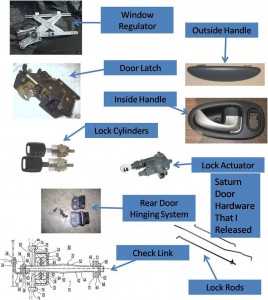 door locks, door latches, inside and outside handles, lock rods, lock actuators, key cylinders, check links and hinging systems. (Click on Illustration for photos of actual parts).
door locks, door latches, inside and outside handles, lock rods, lock actuators, key cylinders, check links and hinging systems. (Click on Illustration for photos of actual parts).
- Defined and developed all product and validation criteria for the listed components and systems.
- Wrote system technical specifications (STS’s) and component technical specifications (CTS’s) for each of the listed systems and components.
- Optimized the design of the 1996 Sedan window system to reduce crank efforts by 50% over the previous model. Utilized design of experiment techniques to determine the optimal design. Study on display at GM Knowledge Center.
Prototype, Testing and Product Validation
- Performed appropriate engineering calculations and analysis for dynamic and aesthetic parts and systems.
- Oversaw validation testing of hardware components and improved design as necessary to meet component, system and vehicle specifications.
- Proposed, built and evaluated several prototypes using rapid prototyping techniques. Math data based stereo lithography and CNC machined mock ups.
Production Sourcing and Tooling
- Worked concurrently with purchasing and manufacturing engineering to source both prototype and production tools for window lift systems, lock, latch/release systems and hinging/check systems.
Product Engineering Team Leader, Eaton Marine Hydraulics, Lansing, Michigan 1986-1990
Design Input As A Working Team Leader
- Selected and defined all component materials for power steering system. Materials included thermo and thermo set plastics. Nitrile seals. Aluminum. 300 and 400 series stainless steels. High and low strength carbon steels.
- Determined initial manufacturing processes to meet product requirements for the power steering system. Processes included aluminum impact extrusions. Aluminum forward extrusions. Aluminum castings. Plastic injection moldings. Turnings. Cold heading. Investment castings. Precision machining (+/- 0.000060″). Center less grinding. Stampings. Die cutting. General assembly.
- Updated all designs as prototype builds, testing and validation revealed necessary design improvements.
Prototyping, Testing and Product Validation
- Coordinated the purchase and build of prototype components for power steering system. Parts were purchased from several different prototype shops. Oversaw budgeting, purchasing, engineering and assembly for prototype and validation phases.
- Wrote CNC programs to make internal prototype components on CNC vertical machining center. M codes and G codes.
- Developed test plans and procured test equipment for all product validation testing.
- Oversaw validation testing, performed root cause analysis for issues, and developed improved designs to meet durability requirements.
Production Sourcing and Tooling of the Power Steering System Final Design
- Obtained quotes for production tooling of all components. 90% new content. 50% new processes and materials for Eaton Marine Hydraulics.
- Participated in vendor selection process for all components.
- Oversaw validation builds and managed the product engineering and design portion of production launch.
Resource Management
- Team Leader of power steering product development group consisting of 2 engineers, 1 designer, 1 detailer, 1 model maker (Journeyman tool maker), and a test technician.
- Managed all product, project and human resource costs and issues.
- Managed interaction with OEM customer.
Product Design Engineer, Eaton Marine Hydraulics, Lansing, Michigan 1985-1986
Concept Development
Brainstormed several concepts for outboard engine power steering systems. Selected and created a unique, non automotive type, power steering system for large outboard marine engines (115+ hp). The system included:
- A hydraulic actuator with internal control valving.
- A hydraulic floating piston accumulator (900 – 1200 psi).
- A precision external gear hydraulic pump.
- A 12 volt permanent magnet motor.
- A sealed reservoir, and high/low pressure hoses and fittings.
Design
- Designed and detailed all assemblies and components of the the power steering unit. Drawings included the final assembly, five major sub-assemblies, 10 minor sub-assemblies, and over 100 components. The design was completed using manual drawings and AutoCAD.
-
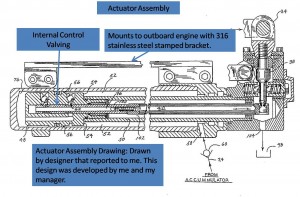
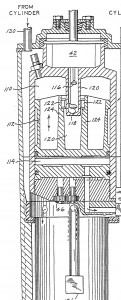
- Determined dimensional requirements and defined them using GD& T on all drawings.
- Performed dimensional stack up studies for assemblies.
- Evaluated environmental and functional requirements for each assembly, sub assembly and component. Performed appropriate engineering calculations and analysis where necessary.
- The design was balanced for function, durability, cost, ease of manufacturability and met all customer defined expectations.
Designed and detailed continuous improvements for outboard engine trim tilt systems simultaneously with designing power steering system.
Materials
Selected and defined all component materials and required processes for power steering system shown above.
Materials included:
- injection molded thermo and thermo set plastics
- Nylons
- Acetals
- Bakelite
- Die cast aluminum
- Impact aluminum extrusions
- Forward aluminum extrusions
- Turned, cold headed, and stamped 300 series stainless steels
- Investment casted 400 series stainless steel
- Nitrile seals
- Sintered bronze and iron
- Turned, stamped and formed low carbon steels
- Turned, heat treated, and ground high carbon steels
- Extruded and carburized low carbon steel
- Chrome, nickel and zinc plating
- Petroleum based paints and adhesives
- Phosphate, irriditing, anodizing and chemical hardening
- Through hardening and surface hardening of steels




